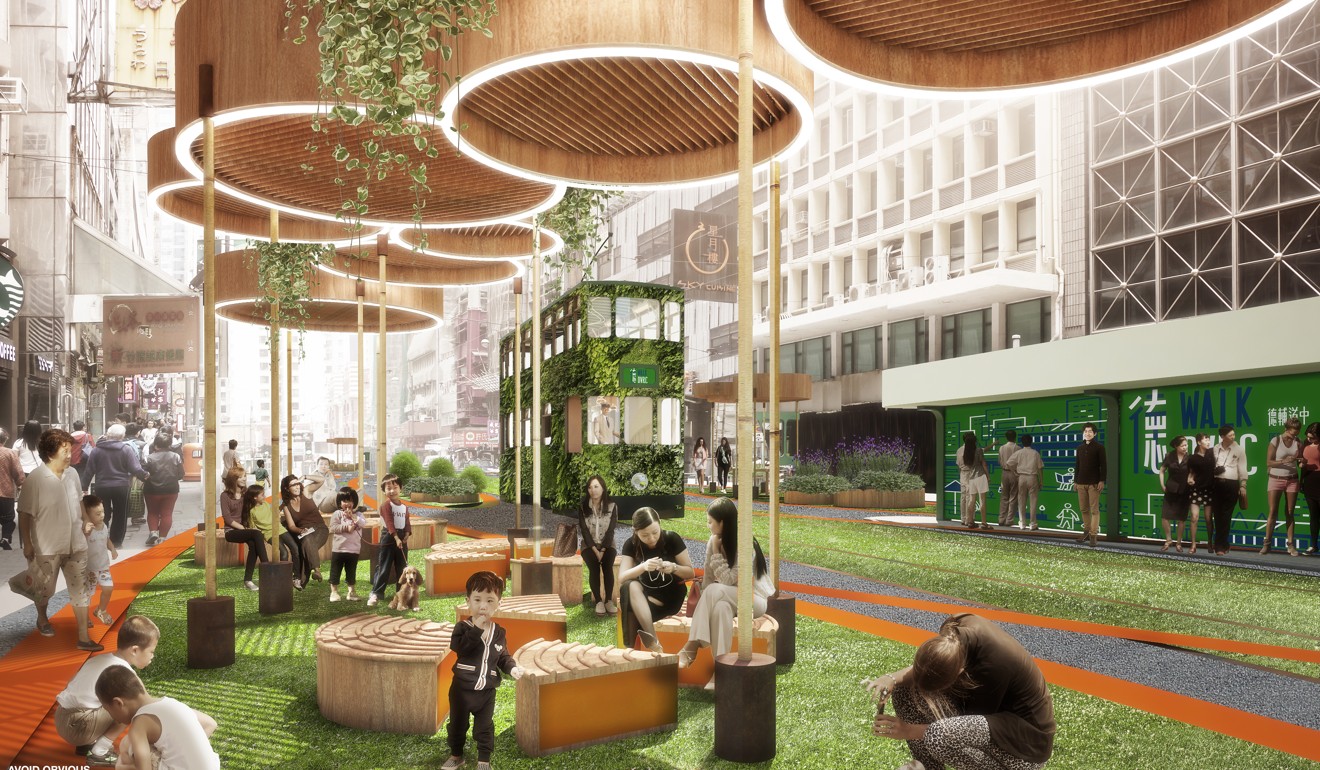
A pedestrian-friendly approach could transform key urban areas into vibrant social and retail hubs
- A pedestrian-friendly city centre, efficient business operations and smooth traffic can coexist through a holistic approach
- Sheung Wan Fiesta will transform a 100m stretch of Des Voeux Road into a car-free zone from 10am to 10pm from April to June

Hong Kong’s retail landscape is in danger of falling behind, as millennial and Generation Z consumers, who continue to influence the future of retail by setting new benchmarks for the industry, demand digitally-engaging, entertaining and shareworthy experiences. I believe a fundamental mindset shift is needed to deliver these experiences and secure Hong Kong’s retail competitiveness moving forward. To reinvigorate retail, the answer could lie in addressing one of the city’s major challenges: a lack of pedestrian-friendly urban space.
To evolve our retail scene, brands, the government and landlords must join hands to support a continuing desire to shop in physical stores. In addition to seamless online-to-offline shopping, new retail occasions are key to engaging new generations of consumers. A walkable pedestrianised space with diverse layers of retail, interesting shops, entertainment, activities, and food and beverage options can deliver a vibrant destination for people to enjoy, get excited about, and spend time in – increasing footfall and ultimately drive higher retail sales.
With the city’s e-commerce value forecast to rise 42 per cent by 2020, brands and retailers are under mounting pressure to bridge the gap between online and offline shopping. By implementing tech into their bricks-and-mortar shops, more retailers are moving to facilitate the seamless omnichannel experiences consumers want. In addition, more brands are capitalising on adjusted rents to establish smaller shops in prime locations, evolving their in-store experience with attractive layouts and exclusive customer activities. Nevertheless, while new retail technologies and innovative store formats can create immense changes in the retail space, trends like pedestrianisation could transform whole urban landscapes.

People-first street design does not come without challenges. Hong Kong has implemented pedestrianised zones across the city before with varying levels of success. Complex traffic re-routing, disruptions to the loading and unloading of goods, overcrowding and nuisances (i.e. noise complaints due to street performers) are all legitimate pain points for businesses that must be addressed. Beyond ensuring that businesses and traffic are not disrupted, adequate urban design elements also need to be considered – public amenities such as attractive greenery, shaded seating, water fountains and free Wi-fi can all impact the success of a pedestrian zone.
Despite these challenges, I believe a pedestrian-friendly city centre, efficient business operations and smooth traffic can coexist through a holistic approach. Hong Kong has learned from past pedestrianisation projects and can be inspired by examples abroad. When New York’s Times Square was pedestrianised, the area saw an 84 per cent increase in stationary population (i.e. people that stayed to eat and shop). Traffic fears did not materialise. After a six-month trial, 68 per cent of surrounding businesses supported a permanent road closure, an indication that pedestrianisation positively affected them. This is not unique – La Rambla in Barcelona, Pitt Street in Sydney, Tokyo’s Shinjuku and many more places are cases for Hong Kong to look towards.
Which areas in Hong Kong could we pedestrianise? Transforming Des Voeux Road Central (DVRC) into a vibrant urban space could be a great start. Its location in the city centre makes it a prime candidate to become an integrated commercial and leisure hub that conveniently connects adjacent districts. In this more walkable and connected district, residents and tourists alike could walk to the future Central Harbourfront development with ease.

The existing Walk DVRC proposal aims to partially pedestrianise 1.4km of Des Voeux Road from Pedder Street in Central to Western Market in Sheung Wan by restricting vehicular access to trams and leaving one lane open for loading/unloading and emergency vehicles. This would allow people to enjoy a greener DVRC with reduced noise and improved air quality. As more residents, tourists, and office workers are likely to be attracted to the area, businesses could benefit from increased visibility, and consequently, higher revenues. In this case, landlords would see reduced vacancies and increased property values, paving the way for more vibrant neighbourhoods and aiding the city’s future competitiveness.
The upcoming Sheung Wan Fiesta is worth watching closely as a critical step to realising this vision. Planned to come into action from April to June, the 90-day trial would pedestrianise the blocks from Morrison to Hillier Street, helping to deliver valuable insights into the viability of a pedestrianised DVRC.
Nigel Smith is managing director at Colliers International Hong Kong